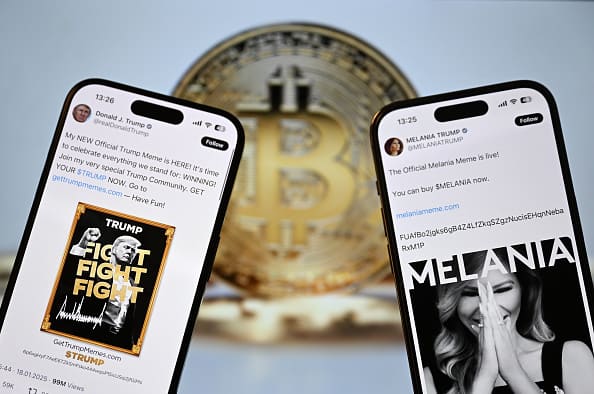
The Wild Ride of Trump’s Meme Coin: Crypto Chaos and the Lessons Learned
Yo, let’s talk about the $TRUMP meme coin—because *sheesh*, this thing has been a rollercoaster. Launched on the Solana blockchain, this digital token was supposed to be Trump’s golden ticket into the crypto world, solidifying his image as a pro-crypto president. But instead, it turned into a classic case of the rich getting richer while the little guys got bulldozed. Early investors and insiders cashed out millions, while over 200,000 small traders watched their wallets bleed red.
The $TRUMP Coin: A Get-Rich-Quick Scheme for the Elite?
From the jump, this coin smelled like a rigged game. According to Chainalysis, at least 50 big-shot investors walked away with profits over $10 million *each*. Meanwhile, the average Joe holding the coin? Most made less than $100—if they didn’t lose money entirely. That’s like watching a construction crew demolish a building while handing out gold bricks to the foremen and leaving the rest of us with scrap metal.
The coin’s wild price swings exposed one of crypto’s dirtiest secrets: *early access is everything*. Insiders and whales pump the value, hype it up, and then dump their bags on retail investors who show up late to the party. By the time regular folks heard about $TRUMP, the big money had already been made. Over 813,000 wallets collectively lost a staggering $2 billion—proof that memecoins are less about “financial freedom” and more about financial *foolery*.
The Ethical Minefield of Celebrity-Backed Crypto
Trump’s meme coin wasn’t just a financial disaster—it was an ethical nightmare. When a political figure (or anyone with a massive following) slaps their name on a speculative asset, it blurs the line between endorsement and exploitation. Sure, Trump’s team framed it as “supporting digital currency,” but let’s be real: this was a cash grab wrapped in red, white, and blue.
And it didn’t stop there. The hype around $TRUMP spawned a swarm of copycat scams—fake coins using Trump’s name, his family’s names, even his dog’s name (probably). Newbies diving into crypto for the first time got hit twice: first by the volatile coin itself, then by the parasites feeding off its hype. If this doesn’t scream *”We need regulation yesterday,”* I don’t know what does.
Crypto’s Bigger Problem: A Market Built on Sand
The $TRUMP fiasco isn’t just about one bad coin—it’s a symptom of crypto’s deeper issues. The market is still the Wild West, where pump-and-dump schemes thrive, transparency is optional, and retail investors are the ones left holding the bag. Memecoins might be fun when they’re about dogs or frogs, but when they’re tied to political figures, the stakes get *real*.
Regulators have been slow to act, but this mess should be a wake-up call. If crypto wants mainstream trust, it needs guardrails—clear rules on insider trading, celebrity endorsements, and transparency in token launches. Otherwise, we’re just rebuilding the same crooked financial system we tried to escape.
The Aftermath: What’s Left After the Dust Settles?
So, what’s the takeaway? First, memecoins are gambling, not investing. Second, celebrity-backed crypto is a red flag the size of Trump Tower. And third, until regulators step in, the crypto market will keep rewarding sharks while the minnows get eaten.
The $TRUMP coin didn’t just make headlines—it exposed the cracks in crypto’s foundation. If we learn anything from this dumpster fire, it’s that the market needs *less* hype and *more* accountability. Otherwise, the next meme coin crash won’t just burn wallets—it’ll torch crypto’s future.
*Cleanup’s done, folks. Now let’s hope the next big crypto trend isn’t another wrecking ball.* 🚜💥




发表回复